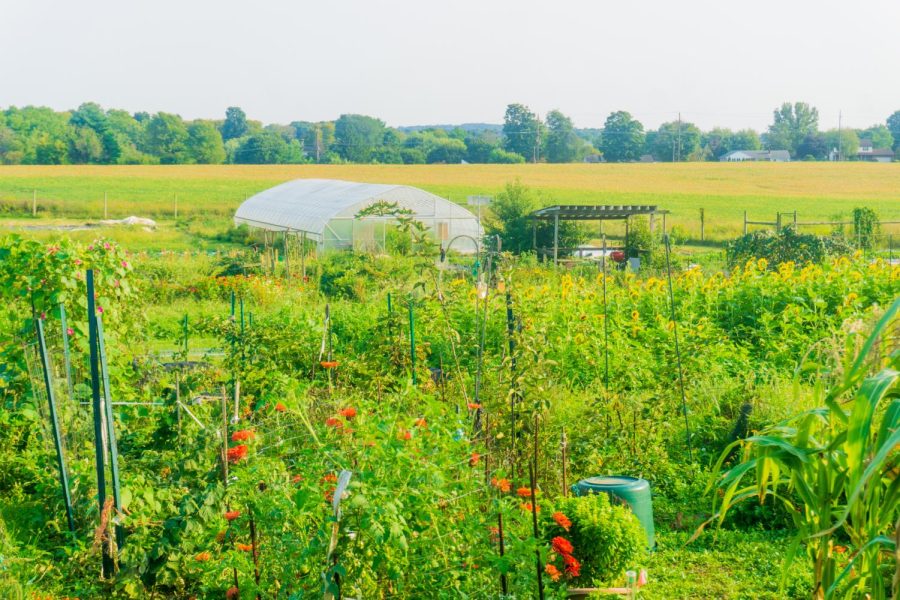According to a recent nonmarket valuation, the LaFarm experience can’t be “beet.”
The valuation, conducted by Remy Oktay ’24, found that the farm’s nonmarket value was $486,798 annually. This number indicates the amount that Lafayette students would be willing to pay for LaFarm goods and services, not how much LaFarm actually costs.
Josh Parr, manager of food and farm who assisted Oktay in his research, said that the college invests $11,000 annually into the farm, which covers all maintenance and student salaries.
“I think you can make a pretty strong case for the college wanting to put in more money, knowing that it will get a big return,” Parr said. “I think that [valuation] shows that the farm is actually very central to a lot of people’s experience here.”
Oktay first got the idea to conduct a nonmarket valuation of LaFarm when he traveled to the Galápagos Islands and met a doctoral student doing research on the value of each shark in terms of tourism dollars. When he came to Lafayette and realized how much he enjoyed his time at LaFarm, the idea came to him to conduct an independent study on the topic.
“I was at the farm just hanging out with Farmer Lisa [Miskelly] … and I was thinking to myself, ‘Wow, people really love the farm. I love being here. It’s a great resource to have on campus. I wonder how much it’s worth to our campus community,’” Oktay said. “That was the seed that connected with some assets that I had experience with.”
Oktay, who previously worked with economics professors Hongxing Liu and Joaquín Gómez-Miñambres on their individual research, reached out to them again to learn how to best start with his project.
“It’s great when you see students who are not only interested in learning economic techniques but using those techniques to help the community and to help the college understand something as important as this,” Gómez-Miñambres said.
In order to complete this project, Oktay had to learn multiple new economic and data analysis techniques. He arrived at the near $500,000 valuation by surveying 690 Lafayette community members on how much they would pay to keep LaFarm open or expand it in its current state.
“I think what this shows is that this is a really valuable asset to the campus community … and that investments should be made to continue to expand it,” Oktay said.
Parr agreed that this valuation emphasizes the importance of LaFarm to the campus community.
“I think it helped me to affirm something that I already kind of intuitively thought about the farm,” Parr said. “It’s very clear to me that the value in a farm like this isn’t just about the food it produces — it’s about education and experience. As great as the farm already is, there’s so much potential for what we could do with the space if we had more resources.”
The valuation took into account volunteer hours, personal investment from community members and produce revenue.
“Sometimes things that do not have a market value, we tend to think that they are worthless and they are not. [It’s] just more difficult to estimate what the true value is,” Gómez-Miñambres said. “This actually emphasizes that the students, and the Lafayette community in general, put a lot of value on the farm, and sometimes we don’t recognize it.”
Liu said that these findings mean something bigger for the college, especially with the recent push to increase sustainability.
“In the bigger sense, I think this contributes to the Climate Action Plan of the college, of our commitment to be carbon neutral,” Liu said. “And I think this builds to … the benefits of all the environmental efforts that we are making.”
“Long story short, it’s valued, it’s loved, and it should be invested in when decisions arise,” Oktay said of LaFarm.
























































































































